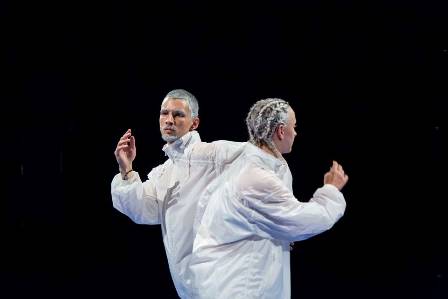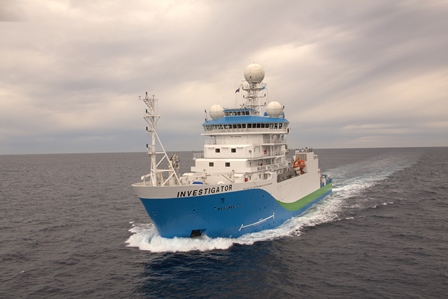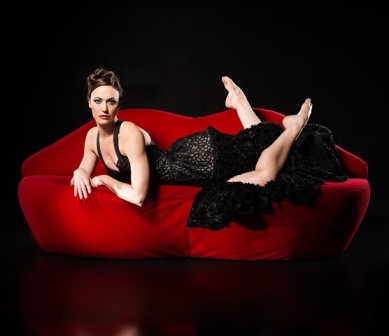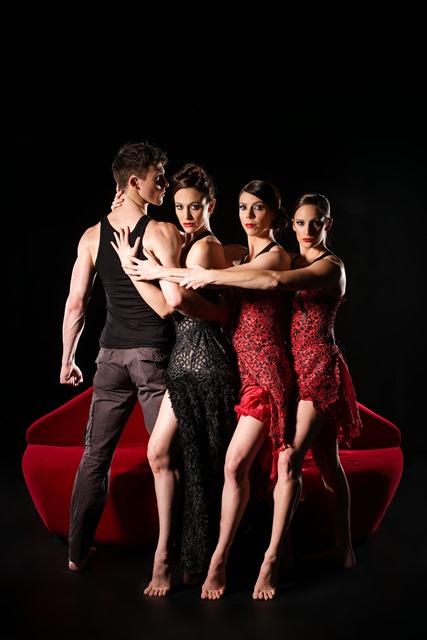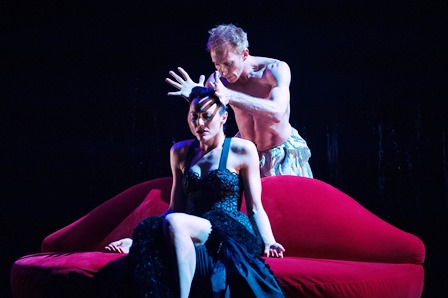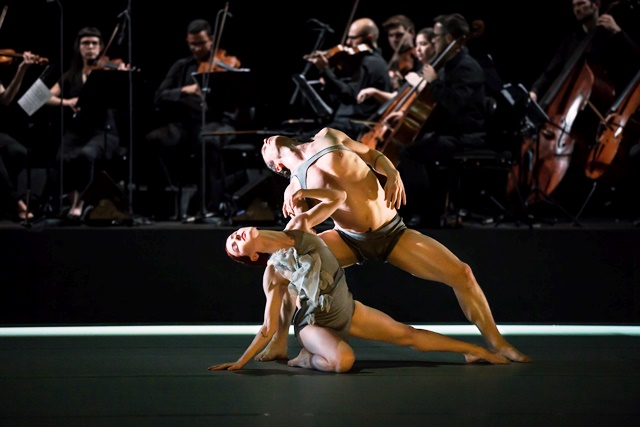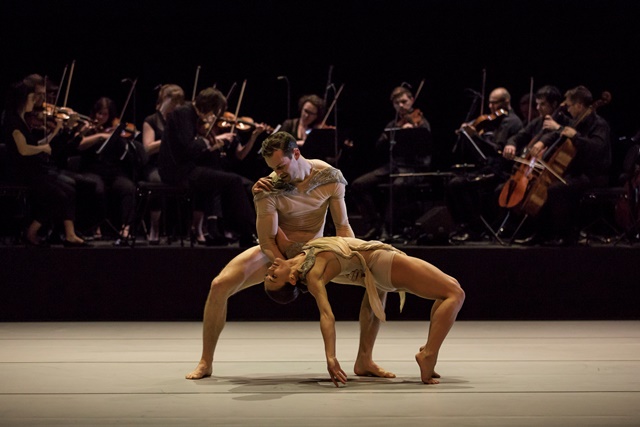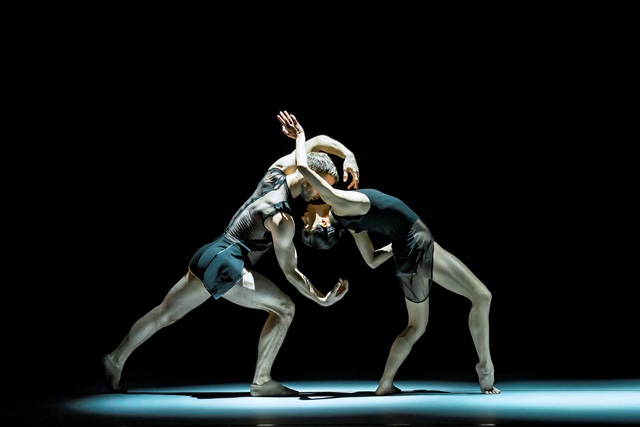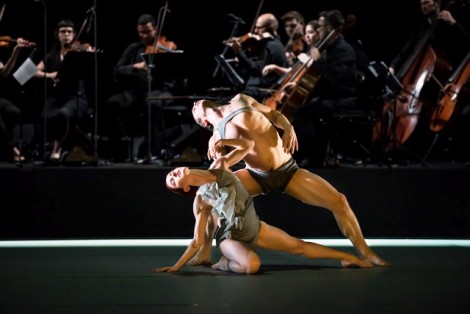24 October 2015 (matinee), Lyric Theatre, Queensland Performing Arts Centre, Brisbane
After my Australian Ballet brush with Beauty I was longing to see another production and so took a flying visit to Brisbane to see what Greg Horsman had done with this classic of the ballet repertoire. Horsman’s Sleeping Beauty was originally made for the Royal New Zealand Ballet in 2011 and is being performed for the first time in Australia by Queensland Ballet. I did not see the international stars who have been engaged as special guests for the season, which did not bother me as it was the production that particularly interested me.
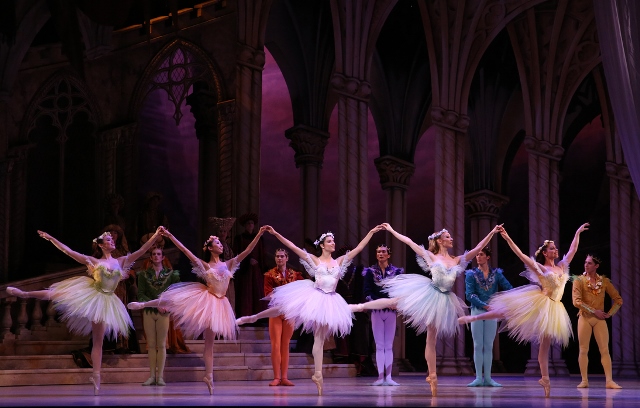
Horsman has made some small changes to the story, some of which may well be as a result of working with a medium-sized company in both New Zealand and Queensland. Perhaps the most startling change is that Catalabutte, assistant to the King, and Catalabutte’s wife, Lady Florine, are cats. This at first is a shock. But they are so beautifully, and at times humorously, worked into the story—their dance together in the last act takes the place of Puss and Boots and the White Cat—that suspending disbelief is easy. Jack Lister as Catalabutte made a strong impression throughout, but especially as he pursued the Bluebird in the wedding scene.
There is also quite a lot of mime as explanation of the story. This is not an innovation, of course, but unless well done mime passages tend to get lost in translation as it were. The dancers of Queensland Ballet have, however, been well coached in this aspect of the ballet and they have an expansive quality to their gestures. Everything is perfectly clear. Nothing drags along.
The dancing itself had some ups and downs. The corps de ballet worked nicely together for the most part and Teri Crilly and Camilo Ramos stood out as the lead couple in what is usually the Garland Dance (although in this production there were no garlands). Ramos, who has a wonderful stage presence as well as a stellar technique, also danced strongly as one of the Prince’s friends in Act II. The fairies, too, danced nicely throughout, although my eyes kept turning to the Orange Fairy of Grace danced by Lisa Edwards. I loved the charm with which she performed and the delicious fluidity of her movement. She shone.
I found Yanela Piñera, Queensland Ballet’s 2015 guest principal artist, very engaging as Aurora. Piñera handled the rose adagio and the final grand pas de deux with strength and attack, but what really stood out was her joyful presence throughout. She involved herself in everything, and with everyone. She smiled, made eye contact, and used her head and arms beautifully. It was a real pleasure watching her.
Hao Bin as the Prince did not, however, always live up to my expectations. I enjoyed his acting at the start of Act II where he kept himself apart from his friends in the forest as he pondered the lack of love in his life. But once he started dancing I found him a little wooden. I wished he would move his upper body with more fluidity and use his feet more strongly.
Gary Harris’ sets are gorgeous. His interiors recall Gothic architecture with its emphasis on soaring space; his exteriors are airy, beautiful places in which the story can unfold; and the final scene with its starry background provides an especially elegant setting for the wedding of Aurora and the Prince. His work was evocatively lit by Jon Buswell.
The jarring elements for me in Harris’ design input were the costumes for the two Bluebirds, although perhaps it was the very heavy eye make-up they wore that made the costumes seem over the top compard with the general elegance of the last scene. Teri Crilly was a lovely female bluebird. Whether listening, fluttering her hands, or simply executing a step, everything was performed cleanly and with great style. Her partner, Zhi Fang, seemed very nervous and so did not really show himself to advantage.
Nigel Gaynor conducted a vibrant Queensland Symphony Orchestra where tempi, volume and orchestral colour contributed to the unfolding of the story and to the development of the characters in the ballet. The orchestra added an extra emotional layer to the performance and it was such a pleasure to be hearing this kind of collaboration between music and dance. From 2016 Gaynor will take up the position of principal conductor and music director of Queensland Ballet.
I came away from this Queensland Ballet performance loving the passion that the dancers put into their performance, despite the odd stumble or other mishap. But most of all I came away thrilled that the collaborative elements of music and design were working to enhance the dance, rather than ignoring it or trying to outdo it.
Michelle Potter, 25 October 2015
